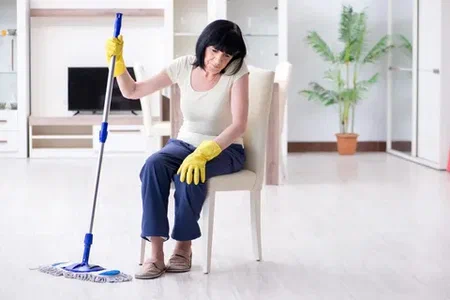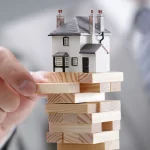
The subfloor, often hidden beneath layers of flooring, plays a crucial role in the structural integrity of your home. Identifying potential damage early on can save you from costly repairs and ensure a safe living environment. In this guide, we’ll explore the key signs of subfloor damage and offer practical tips on what to do if you suspect issues.
Signs of Subfloor Damage
| Heading | Subheading |
|---|---|
| Sagging or Uneven Floors: A Telltale Sign | Understanding the Causes |
| Bouncy or Spongy Areas: Indicators of Trouble | Probing for Weakness |
| Creaking or Noisy Floors: Hearing the Alarms | Locating the Source |
| Visible Cracks in Flooring: Uncovering the Damage | Examining Patterns and Severity |
| Mold or Mildew Presence: Moisture Woes | Tracing the Source and Solutions |
| Unpleasant Odors: A Nose for Issues | Identifying Potential Causes |
| Increased Energy Bills: Subfloor and Insulation Connection | Addressing Energy Inefficiencies |
| Pest Infestations: Unwanted Guests | Damage Assessment and Prevention |
| Warped or Cupped Floorboards: Moisture and Subfloor Interaction | Determining the Culprit |
| Difficulty in Closing Doors: Structural Shifts | Understanding the Impact |
| Allergic Reactions or Respiratory Issues: Health Concerns | Connecting Subfloor Problems to Health Risks |
How to Identify Subfloor Damage
Sagging or Uneven Floors: A Telltale Sign
Sagging or uneven floors may indicate issues with the subfloor. Use a level tool to identify problem areas and understand the potential causes, which can range from water damage to structural problems.
Bouncy or Spongy Areas: Indicators of Trouble
Gently walk across your floors, noting any areas that feel excessively bouncy or spongy. Investigate these spots to determine if there’s an issue with the subfloor’s integrity.
Creaking or Noisy Floors: Hearing the Alarms
Creaking or noisy floors can signal loose subflooring or gaps between layers. Pinpoint the source of the noise and address it promptly to prevent further damage.
Visible Cracks in Flooring: Uncovering the Damage
Examine your flooring for visible cracks, especially in tiles or hardwood. These cracks may reveal underlying subfloor problems that need attention.
Mold or Mildew Presence: Moisture Woes
The presence of mold or mildew is a clear indicator of moisture issues. Identify the source of the moisture, address it, and consider replacing the damaged subfloor.
Unpleasant Odors: A Nose for Issues
Musty or unpleasant odors may indicate mold growth or rot in the subfloor. Investigate the source of the smell to pinpoint potential subfloor damage.
Increased Energy Bills: Subfloor and Insulation Connection
Damaged subfloors can contribute to energy inefficiencies. Assess your home’s insulation and subfloor condition to improve energy efficiency and lower utility costs.
Pest Infestations: Unwanted Guests
Pest infestations, such as termites, can compromise the integrity of your subfloor. Regular pest inspections and prompt treatment are essential to prevent further damage.
Warped or Cupped Floorboards: Moisture and Subfloor Interaction
Warped or cupped floorboards are often a result of moisture interacting with the subfloor. Identify the source of moisture and address it to prevent further damage.
Difficulty in Closing Doors: Structural Shifts
If doors in your home are becoming difficult to close, it may indicate structural shifts related to subfloor problems. Investigate the cause and address it for improved stability.
Allergic Reactions or Respiratory Issues: Health Concerns
Subfloor issues, especially those related to mold, can pose health risks. If you or your family experience allergic reactions or respiratory issues, consider investigating the subfloor for potential problems.
FAQs
Can subfloor damage be repaired, or does it require replacement?
Minor subfloor damage can often be repaired, but extensive damage may require replacement. Consult with a professional to assess the severity and determine the best course of action.
How can I prevent moisture-related subfloor issues?
Ensure proper ventilation in your home, promptly address plumbing leaks, and use moisture barriers in damp areas to prevent moisture-related subfloor damage.
Are there DIY methods for fixing minor subfloor issues?
Some minor subfloor repairs can be tackled as DIY projects. However, it’s crucial to assess the extent of the damage and consult with professionals if needed.
Can subfloor damage affect the resale value of my home?
Significant subfloor damage can impact the resale value of your home. It’s advisable to address any issues before putting your property on the market.
What professional should I contact for subfloor inspections and repairs?
A qualified contractor or structural engineer can assess subfloor damage and recommend appropriate repairs. Ensure they have experience in dealing with subflooring issues.
Is it common for new homes to experience subfloor problems?
While new homes are generally built with quality materials, unforeseen issues like plumbing leaks or structural shifts can still lead to subfloor problems. Regular inspections are advisable.


